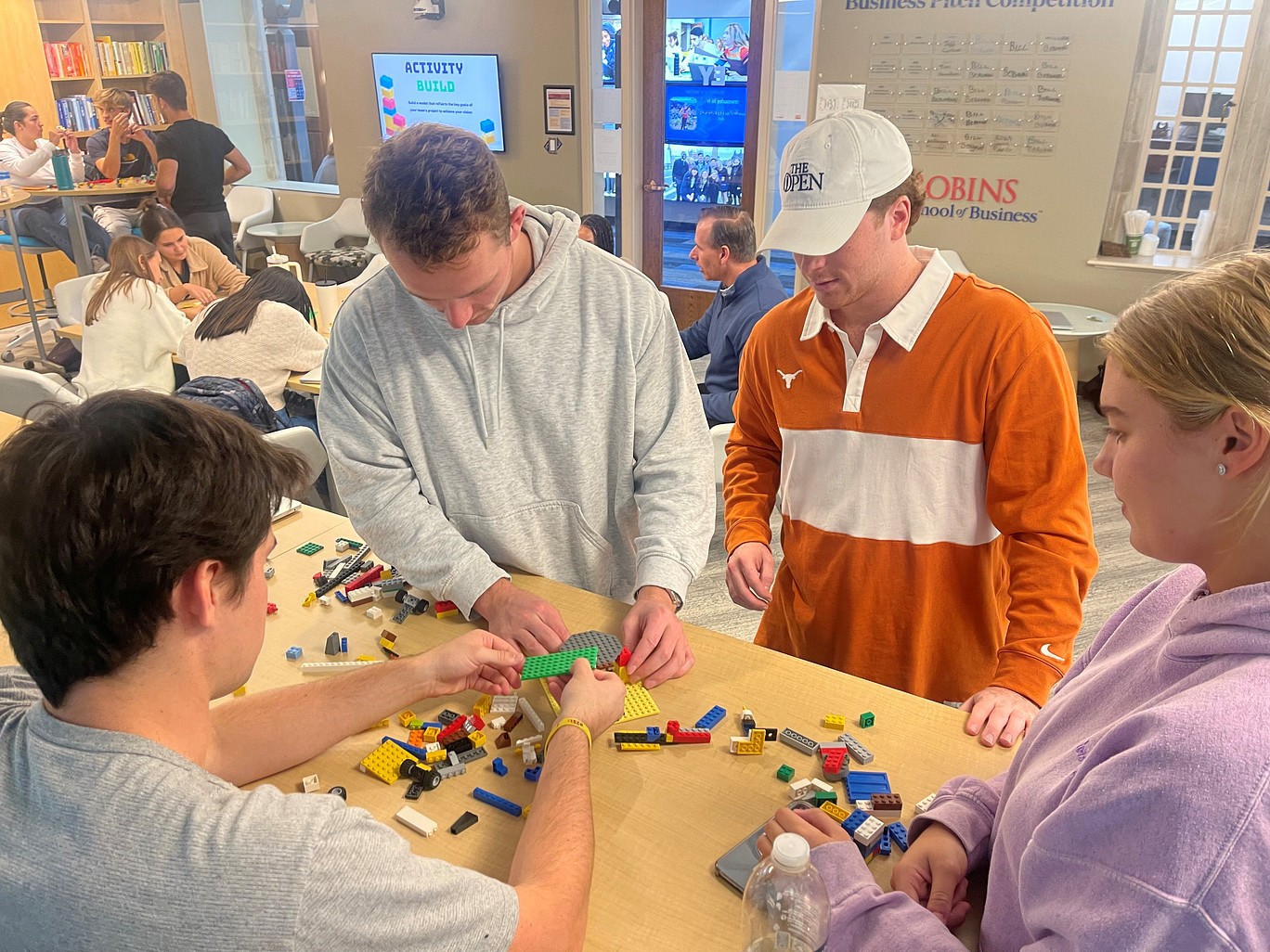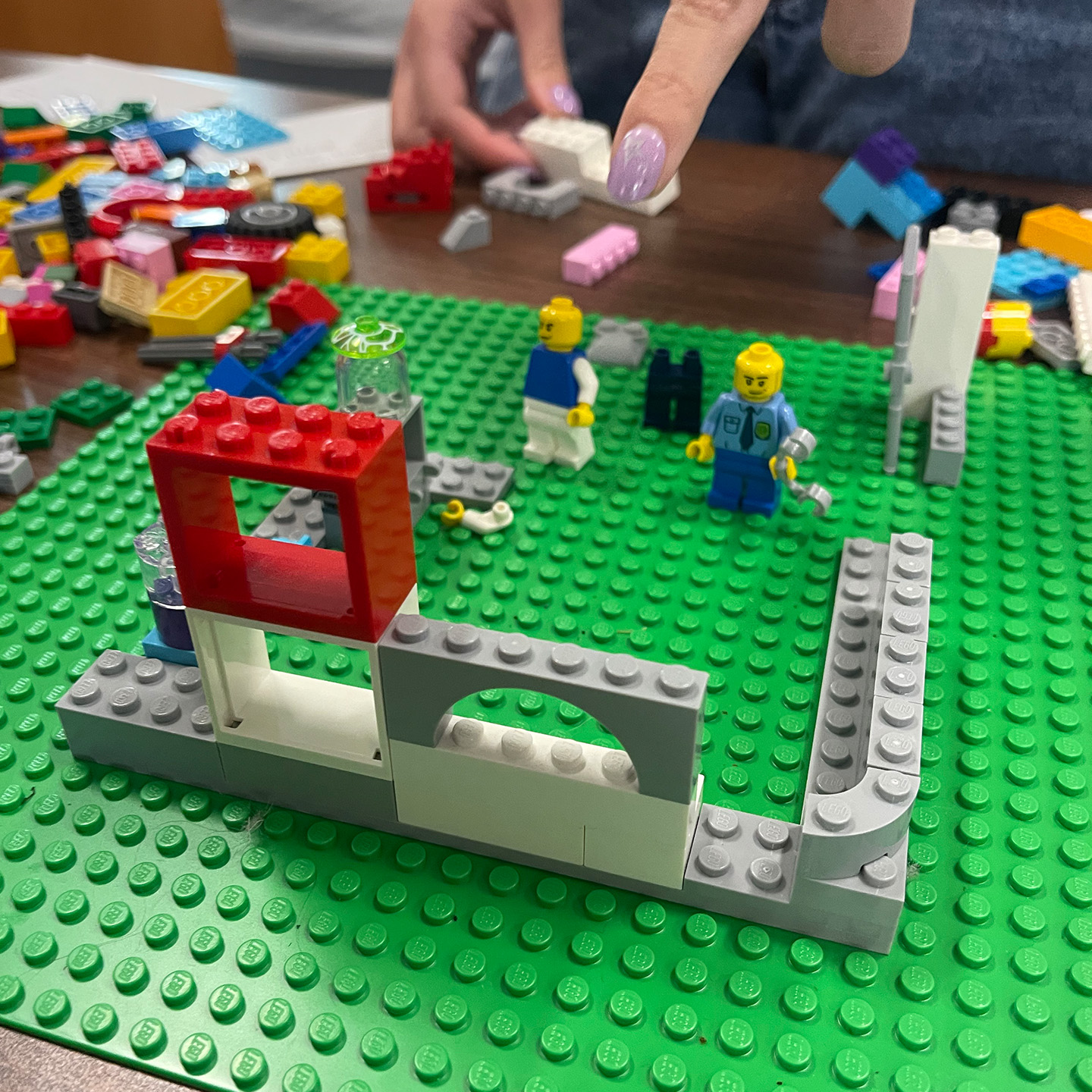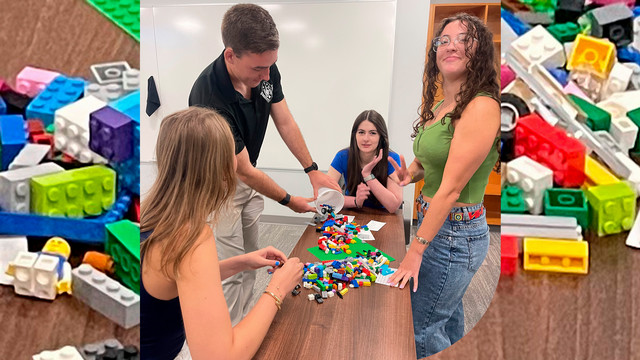Spiders clicking with Lego Serious Play
Research & Innovation
These familiar little plastic bricks are helping UR classes explore abstract concepts and solve problems.
During professor Priscilla Erickson’s Biology 347 Genetics class this semester, her students explored genetic concepts through Lego-based design.
“I wanted students to think broadly about what genetics meant to them and why it was important to study,” said Erickson. “Rather than just having them write things down or talk as a class, I thought it would be fun to do a creative and hands-on activity to build camaraderie on the first day of class.” The group broke into teams and began building models to represent genetics.
Erickson is one of many faculty members who have used the studio to help their classes explore abstract concepts and solve problems through Lego Serious Play, a mix of bricks designed primarily for adults to spark dialogue, enhance problem-solving, and stimulate imagination during workshops.
Ad-lib and innovate
“You go in with no planning, no programming, and no context. You put stuff together, and then ideas come to you. Even for people who are thinking there's no way this is going to work, it does work,” said UR Director of the Innovation Studio Andrew Ilnicki, who holds a certification in the program. “There is a magic to it.”

When working with students, like the ones in Erickson's biology class, Ilnicki leads a few warm-up activities before launching into a challenge. In one, he asks participants to click together a classic Lego duck using six bricks. There are no expectations, he said, observing that no two ducks have ever come out looking the same in his workshop.
“Use the constraints of just having six bricks and a limited time as an advantage to unlock your creativity,” he said.
Some of the business classes use Legos as a way for teams to design an innovative solution for challenges, including campus-related issues. One group explored ways to improve laundry service on campus. Another used the bricks to imagine new electric scooter paths.
In Erickson’s class, each team received a green base plate and a pile of plastic bricks that Ilnicki had scooped from a large bin and dumped onto the table with a clatter.
“I like to invite randomness into this. I don't want you going through and planning too carefully,” Ilnicki said, strongly suggesting the students not contemplate the order in which the bricks would be combined. “I want you to see what emerges from the bricks,” he said.
Creative mindset welcomed

The piles of multi-colored blocks also include accessory pieces such as windows, wheels, ladders, and Lego people.
“I was surprised by how challenging it was to come up with a design on our own. Usually when building with Lego, you follow step-by-step instructions that guide you to the final creations,” said senior Lily Strauss, a biochemistry & molecular biology major.
Erickson’s class was comprised mostly of pre-health students who intend to pursue medical and veterinary studies in graduate school. The teams shared their ideas with each other and then collaborated on a design. While the plastic blocks might easily lend themselves to DNA models, the students surprised her with their creations.
Strauss’ group envisioned a futuristic research lab that included Lego characters undergoing experiments to highlight the importance of technological advancements in genetic research. Another group focused on the importance of genetic diversity in evolution by creating an array of unusual animals.
“Overall, I thought the program was engaging and a great way to encourage collaboration and creative thinking,” Strauss said. “It will help me approach class projects with a more open and imaginative mindset.”

